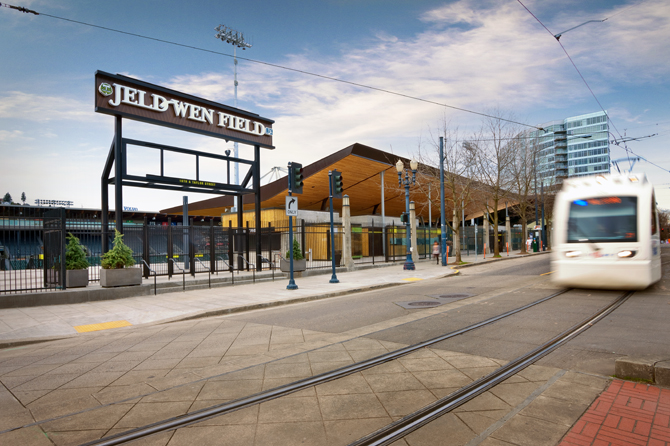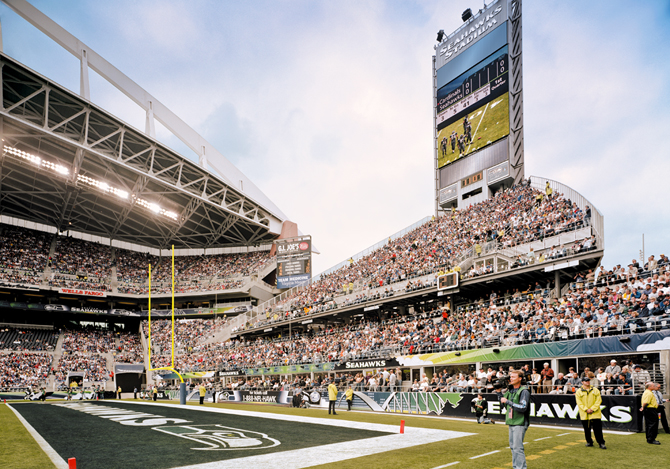Connect, excite, inspire with the urban sports venue
Above: Barclays Center, home of NBA Brooklyn Nets. Photo by Bruce Damonte.
Venues for different sports—football, baseball, and soccer stadiums, basketball and hockey arenas—are different animals. They have to do different things. What they have in common is the responsibilities of providing their team with a home field/court advantage, their spectators with an exciting experience, and their surrounding neighborhood with a development that is connected and complementary, rather than looming and remote.
The following five considerations are among the keys to creating the successful urban sports venue.
1. The site for the venue is the biggest decision you will make. Here you determine the story that the venue will write within the city, whether it is an agent of inward revitalization or outward sprawl. It is critical that the venue link into the city’s transit network, relieving the spatial, visual and environmental burden of massive parking lots, and maximizing the number of people who can come to the game.
JELD-WEN Field, home of the MLS Portland Timbers. Photo by Steve Wanke.
2. Make something that the players will be happy to call home. Make sure that their locker rooms and training rooms have the latest and greatest amenities. In the case of a court, do something interesting with the floor. Whether arena or stadium, bring the fans as close to the action as possible. Think about the acoustics and how you can amplify crowd noise to the advantage of the home team. Think about how to maximize the value of seating so that less desirable areas become luxury options and every income level has an opportunity to enjoy the full experience.
Centurylink Field, home of the NFL Seattle Seahawks.
3. Think about how much night life you can pack into the venue. Yes, people came here to see a game, but it can be much more than that. It can be the hottest spot in town with bars, lounges, restaurants.
4. The key thing at street level is to have the venue invite people in, even offer them a view of the action from outside, rather than seeming like some forbidding citadel. Line the footprint with retail. Think of the surroundings as a public space, a gift to the city that will be active 365 days a year, not just on game days. There may even be opportunities here for low-impact development, restoring some green space and helping with stormwater management.
Mercedes Benz Superdome, home to the NFL New Orleans Saints. Photo by Philip Gould.
5. Think about how the exterior of the venue will be seen from the neighborhood. Make sure it gives an impression of belonging to the place, its people and history, and instills a sense of pride. Thoughtful selection of materials as well as forms plays into this. Also think about how the city can be seen from within the venue. While looking down into the action on the court or field, spectators can have an iconic view of the city outside, possibly the natural world as well. It is all part of an inspiring experience that gives people a good feeling about their home team, community, city and society.









